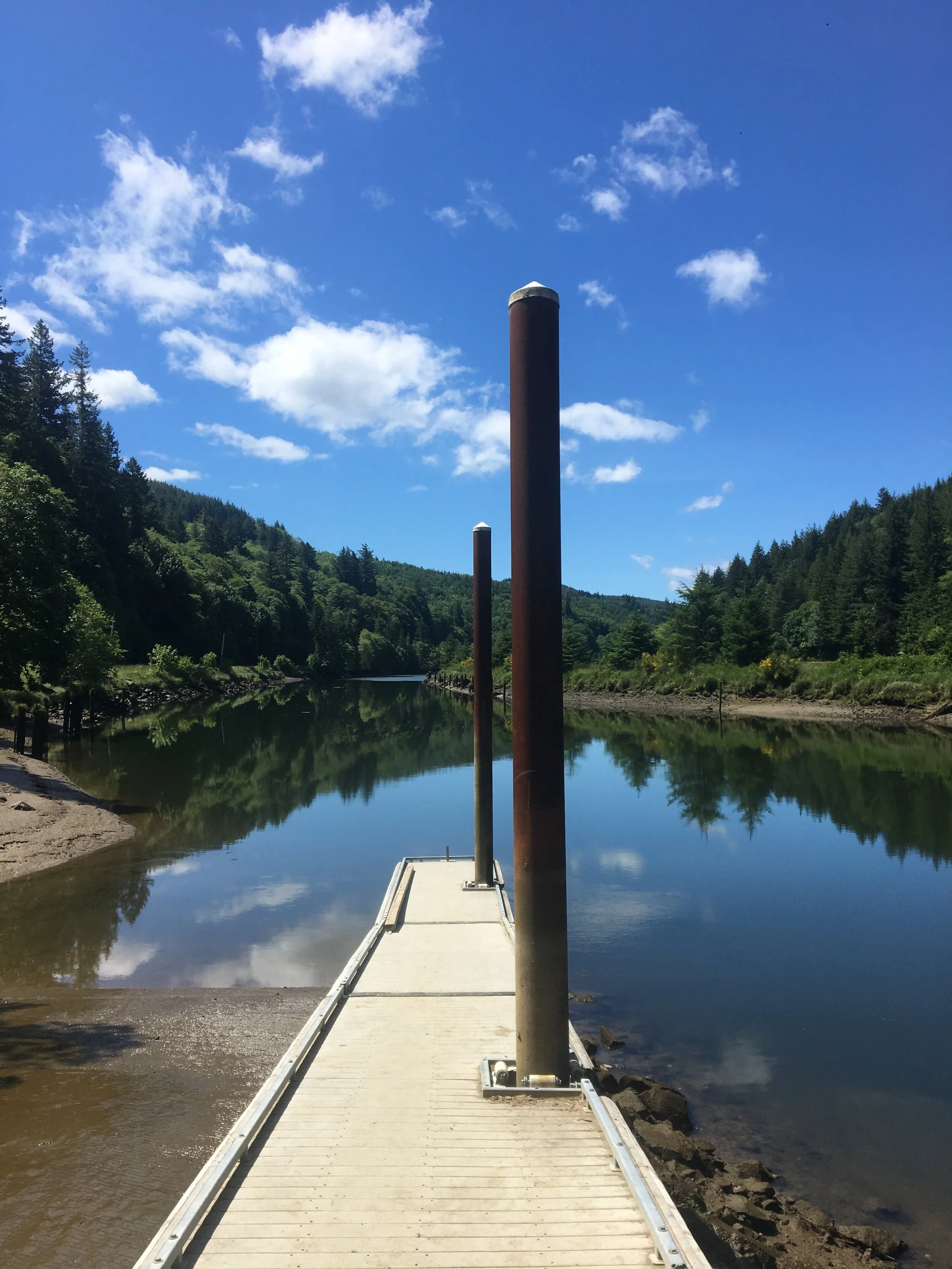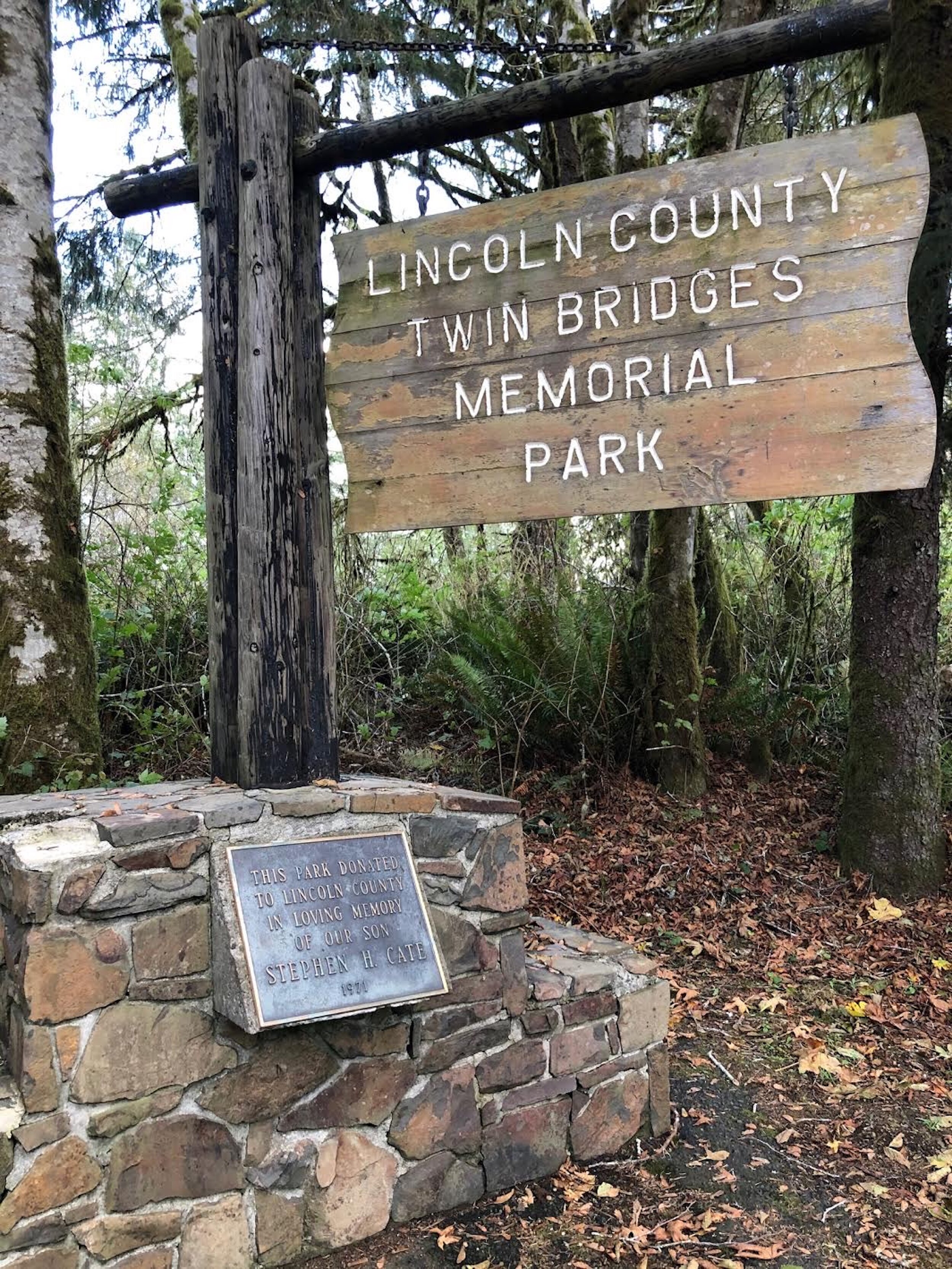What’s in a name?
Behind many a coastal park is a person who made their mark
When searching for a place to play outside, you probably look to see if there is water access, perhaps even a boat ramp. How big is it? Are there hiking trails? But the last thing you might think about is, what’s behind the name?
Some of the most beautiful places on the Central Oregon Coast are public spaces that bear the name or names of departed residents. A beautiful sign at the Twin Bridges park and boat ramp on Highway 229, about five miles from Siletz, tells of the donation and dedication of the park from the parents of Stephen H. Cate, who died in 1971.
And, though land donations can’t erase the fact the words “pioneer” and “settler” can have uncomfortable connotations for the descendants of people who were already living in the area and irreparably impacted by westward expansion, the dedication of lands for public use might help with some healing.
Knight Park is a two-acre county parcel north of Lincoln City, sitting close to where the Salmon River spills into the Pacific Ocean. It features a large boat ramp popular with fishermen, kayakers and even stand-up paddle boarders, who can use the spot to head out to the ocean or travel inland along the scenic river.
“The Knight family were some of the original pioneers,” said Lincoln County Parks supervisor Keith Andresen. “They also helped set up the area that is now run by Camp Westwind.”
The 2.6-acre Strome Park, at mile 13 on Highway 229 along the Siletz River, was also donated by early settlers.
“The Stromes were one of the first homestead families,” Andresen said. “Some of the family still owns property here. We just redid the boat ramp there and made lots of improvements to the property, so it’s a very nice place to visit.”
A planned reforestation is just beginning to take hold and create rich habitat for local fauna at the Walter and Barbara Brown Memorial Park; one of the newest to be added to county ownership and management. The donated property is contiguous with Strome Park, creating an area of more than 60 acres that now includes a seasonal campground.
“In 2007, Mr. Brown and his current wife donated the property to the county and dedicated it to his first wife, Barbara, who passed away in 1999,” Andresen said. “They had always wanted to turn it into a park and he liked what we did with Strome Park. We opened the camp area in July, though it’s now closed it for the season since it falls within the floodway. Eventually, we will have a whole set of trails there too.”
Andresen never met Brown, but he made a strong impression on Lincoln County Commissioner Claire Hall, who was serving at the time of the donation and remembers him vividly and with fondness.
“He was about 81 at the time but struck me as animated, strong and dynamic,” Hall said. “He had the energy and spirit of a much younger man, and told me he felt there is a special place in Heaven for county commissioners, which of course makes him special to me.”
The Browns, Hall said, were conservationists, so when they purchased the formerly cleared property, which had been operated for many years as a ranch, they immediately began the work of reforesting and restoring the land to some semblance of its original state.
“He was very passionate about the fact that he and his late wife felt it was their mission to restore it to as natural a state as possible,” Hall said. “They had already made inquiries to some private conservation groups and the state — no one said yes, but no one said no either. When we said we were interested, he made it clear he wanted it to happen as quickly as possible.”
The urgency, Hall later learned, stemmed from family members trying to dispute the donation of the property, with an eldest son trying, unsuccessfully, to wrest the executor rights to the estate away from his father, still very much of sound mind.
“I hadn’t known much about his background other than that he was a former state senator,” Hall said. “I learned more later, like the fact that he had shepherded the first bill limiting the use of chlorofluorocarbons through the legislature. But in all his dealings with the county, he was very bright, very sharp and he knew exactly what he wanted.”
Brown’s generosity and desire to create not only a legacy for his late wife but a protected natural resource for the county was a great gift.
“With the Brown donation, we now have 13 parks,” Hall said. “Moonshine Park near Logsden was really the only other large park we had had. We do get visitors, but our parks are, in many ways, undiscovered jewels that are used mostly by our residents and families that have come to the area in the summer for sometimes generations, and I’m very proud of them.”
Hall was also involved with the creation of the county’s newest park, about eight miles from Waldport, on the Alsea River. Though not yet open, it is in the final stages of development and named after a man still very much alive, former Lincoln County Commissioner Don Lindly.
“I was the one who suggested we honor Don when we were looking to name a new, roughly 10-acre park we were developing,” Hall said. “He was on the parks board and did a lot for the county in that capacity during his time as a commissioner, which was to date the longest time serving. We’re still ironing out the funding and permitting — with any development near waterways there are many agencies that have to sign off on the phases of the project. But the outcome is always great and worth the effort.”
Lindly is having fun visiting his eponymous park.
“Having a park named after me is pretty special and a great honor,” he said. “It will be a pretty neat place once developed; it’s a pretty beautiful spot.”
“I served on the Oregon State Parks local government grant committee for eight years,” Lindly added. “Voters approved lottery dollars dedicated to parks, with a percentage dedicated to local city, county, ports and special park districts, park acquisition and development projects. I helped fund park projects all over the state. Locally, over my years on the committee, park projects were funded in Lincoln City, Depoe Bay, Waldport, Newport, Toledo and Yachats, and parks in small and large cities all over the state. Without this program, many, if not most of these parks would never have been built.”
Some of his family members, though, are impressed only to a point.
“I have grandkids that only want to know when they are putting the playground equipment in,” he said.
Meanwhile, in Newport, a park named after a former commissioner who is no longer with us offers adventure for people of all ages.
Mike Miller Educational Park in South Beach covers about 40 acres, with various mini eco-systems, from towering Sitka spruce, Western hemlock, Douglas fir and coastal pine trees, to a large sand dune that’s popular with younger visitors.
The park has a stunning trail roughly a mile long, crisscrossed in sections by exposed roots that create lovely and navigable obstacles and dotted with educational signs.
Park brochures are available at the trailhead on SE 50th Place, explaining the educational nature trail with informational guides referencing each area.
Bridges, observation decks and benches along the trail offer plenty of places to take short breaks and listen to the birds call.
There are offshoots that can extend your perambulation, but the mail trail is about a mile long and takes 45 to 60 minutes to walk.
“I love that trail,” Hall said. “At least once a year I try to do it, not just because I love the spot, but I love to visit our parks and, by that, I mean the people’s parks.”
For more information about all 13 Lincoln County parks, including camping information, go to www.co.lincoln.or.us/parks.



